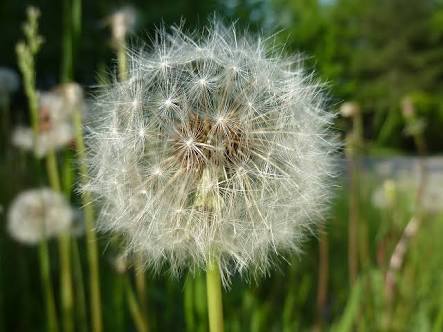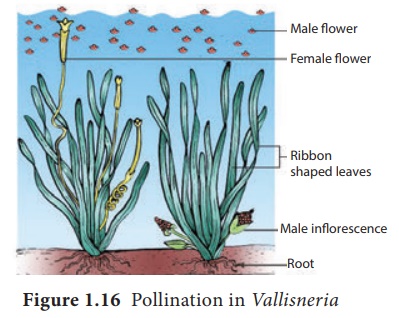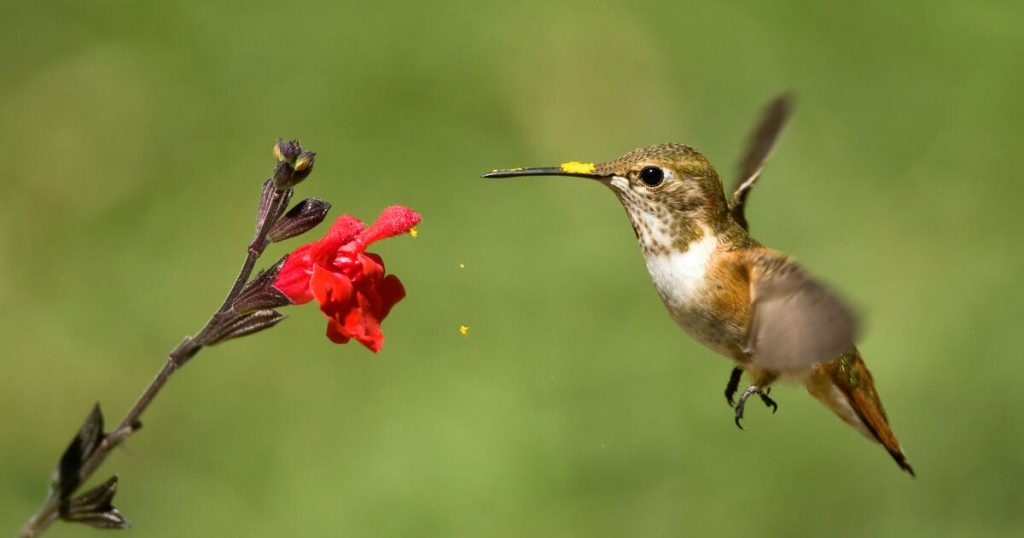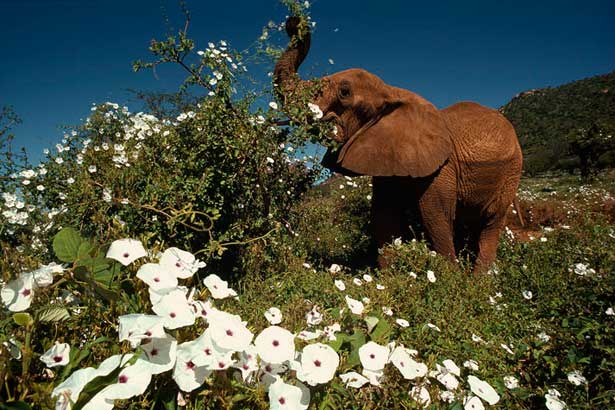Agents of cross-pollination
The two commonest agents of cross-pollination are insects and wind.
But, some flowers are also pollinated by certain animals and birds, like squirrels, bats, etc., or even by water in the case of some aquatic plants.
Each category has some special features to maximize the chances of pollination.
Insect Pollinated Flowers

Insect-pollinated flowers have the following characteristics :
- The flowers are large.
- They are usually brightly coloured to attract insects.
- They usually emit scent to attract insects.
- They produce nectar which is food for the insects.
- The pollen grains are sticky or spiny to enable them to be carried by the insects easily.
- The stigma is sticky and does not generally hang out from the flower.
- The flowers tend to be in clusters to make them conspicuous, especially in cases where individual flowers are small, e.g. Dahlia.
Wind Pollinated Flowers

Wind-pollinated flowers usually possess the following special features.
- The flowers are small.
- They are usually not brightly coloured and often dull green.
- They do not produce scent or nectar.
- The stamens are long and hang out of the flower to be exposed to wind, e.g. Maize.
- The anthers are large and loosely attached to the filaments so that the slightest wind may move
- them .
- Pollen is produced in very large quantities.
- Pollen grains are light, dry and smooth so that they can be easily carried away by wind.
- The stigmas are feathery and hang out of the flower to trap the pollen grains.
Water-pollinated flowers

Water-pollinated flowers are found only in aquatic plants.
Water-pollinated flowers have the following characteristics
Pollen grains are produced in large numbers.
In some plants, the pollen grains have a specific gravity almost equal to that of water so that they remain floating below the surface of water.
In some special cases, male flowers are such that they float on the surface of water till they meet female flowers; e.g. Vallisneria .
Bird Pollinated Flowers

Some flowers are pollinated by birds e.g. Bignonia, Canna.
Elephant Pollinated Flowers

Elephophily is the pollination facilitated by elephants.It is found in Rafflesia whose flowers are very large and are found at ground level. The pollen grains of one flower get stuck to the feet of elephants and may be carried to the stigma of another flower when the flower gets trampled by their feet.
Artificial Pollination

When man himself transfers pollen to the stigma, it is called Artificial pollination.
Artificial pollination (also called artificial crossing) is a standard practice adopted byplant breeders and scientists in their efforts to evolve new varieties.
They remove the anthers in young flowers (emasculation) and cover these flowers with plastic bags (bagging). Later, they pollinate such flowers with the pollen from the plants of the desired variety.


2 Comments on “Agents of Cross-Pollination”